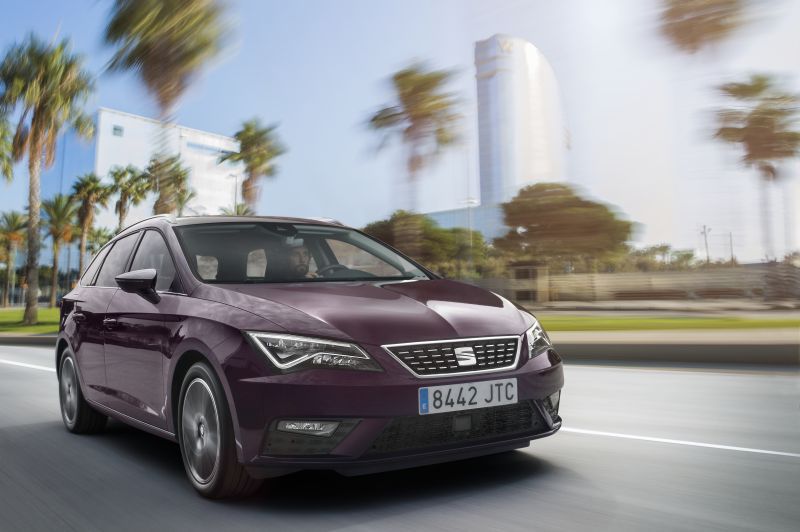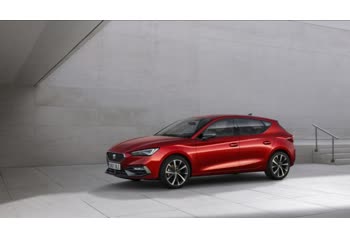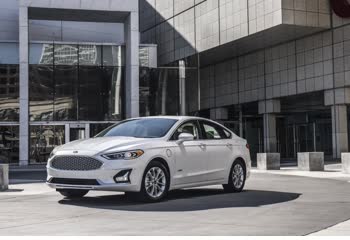Everything you need to know about specifications and performance - Seat Leon 2018 - Cupra 2.0 TSI (300 Hp) 4Drive DSG

Overview:
What is the engine capacity of a Seat Leon 2018?
The engine capacity of the Seat Leon 2018 is 1984 cm.
Seat Leon 2018 How many horsepower?
The engine power of the Seat Leon 2018 is 300 Hp @ 5300-6500 rpm..
What is the Seat Leon 2018 engine?
Seat Leon 2018 engine is EA888 / DNUE. (Click to see other cars using the same engine)
How much gasoline does a Seat Leon 2018 consume?
The Seat Leon 2018 consumes 7.1 liters of gasoline per 100 km
General:
Brand: Seat
Model: Leon
Generation: Leon III ST (facelift 2016)
Modification (Engine): Cupra 2.0 TSI (300 Hp) 4Drive DSG
Start of production: 2018
End of production: 2020
Powertrain Architecture: Internal Combustion Engine
Body type: Station wagon
Seats: 5
Doors: 5
Engine:
Engine systems: Start & Stop System
Power: 300 hp @ 5300-6500 rpm.
Power per litre: 151.2 hp/l
Torque: 400 nm @ 2000-5200 rpm.
Engine Model/Code: EA888 / DNUE
Engine displacement: 1984 cm
Number of cylinders: 4
Engine configuration: Inline
Number of valves per cylinder: 4
Fuel injection system: Direct injection
Engine aspiration: Turbocharger, Intercooler
Valvetrain: DOHC
Engine oil capacity: 5.7 l
Engine layout: Front, Transverse
Cylinder Bore: 82.5 mm
Piston Stroke: 92.8 mm
Compression ratio: 9.3
Performance:
Fuel Type: Petrol (Gasoline)
Fuel consumption (economy) - urban: 9 l/100 km
Fuel consumption (economy) - extra urban: 6 l/100 km
Fuel consumption (economy) - combined (NEDC): 7.1 l/100 km
Fuel consumption (economy) - urban (NEDC): 9 l/100 km
Fuel consumption (economy) - extra urban (NEDC): 6 l/100 km
Fuel consumption (economy) - combined: 7.1 l/100 km
Emission standard: Euro 6 BG
Acceleration 0 - 100 km/h: 4.9 sec
Acceleration 0 - 62 mph: 4.9 sec
Maximum speed: 250 km/h, Electronically limited
Weight-to-power ratio: 4.9 kg/Hp, 202.4 Hp/tonne
Weight-to-torque ratio: 3.7 kg/Nm, 269.9 Nm/tonne
Acceleration 0 - 60 mph: 4.7 sec
Space:
Kerb Weight: 1482 kg
Max. weight: 2090 kg
Max. roof load: 75 kg
Max load: 608 kg
Trunk (boot) space - minimum: 587 l
Permitted trailer load with brakes (12%): 750 kg
Fuel tank capacity: 55 l
Permitted trailer load without brakes: 750 kg
Permitted towbar download: 80 kg
Permitted trailer load with brakes (8%): 750 kg
dimensions:
Length: 4548 mm
Width: 1816 mm
Height: 1431 mm
wheelbase: 2631 mm
Width including mirrors: 1975 mm
Front track: 1536 mm
Rear (Back) track: 1510 mm
Front overhang: 860 mm
Rear overhang: 1057 mm
Minimum turning circle (turning diameter): 10.5 m
Powertrain, Suspension and Brakes:
Drivetrain Architecture: The Internal combustion Engine (ICE) drives the front wheels permanently, and the rear wheels are driven through an electrically or mechanically operated clutch if necessary.
Drive wheel: All wheel drive (4x4)
Number of gears and type of gearbox: 7 gears, automatic transmission DSG
Front brakes: Ventilated discs, 340x30 mm
Rear brakes: Disc, 310x22 mm
Assisting systems: ABS (Anti-lock braking system)
Steering type: Steering rack and pinion
Power steering: Electric Steering
Tires size: 235/35 R19
Wheel rims size: 8J x 19
Front suspension: Independent, type McPherson with coil Spring and anti-roll bar
Rear suspension: Independent multi-link Spring suspension with stabilizer
See also

Other generation.
Its production began in 2021 until Now

Same production year and almost the same engine capacity.
Its production began in 2018 until Now

Same production year and almost the same engine capacity.
Its production began in 2018 until Now
Write a comment